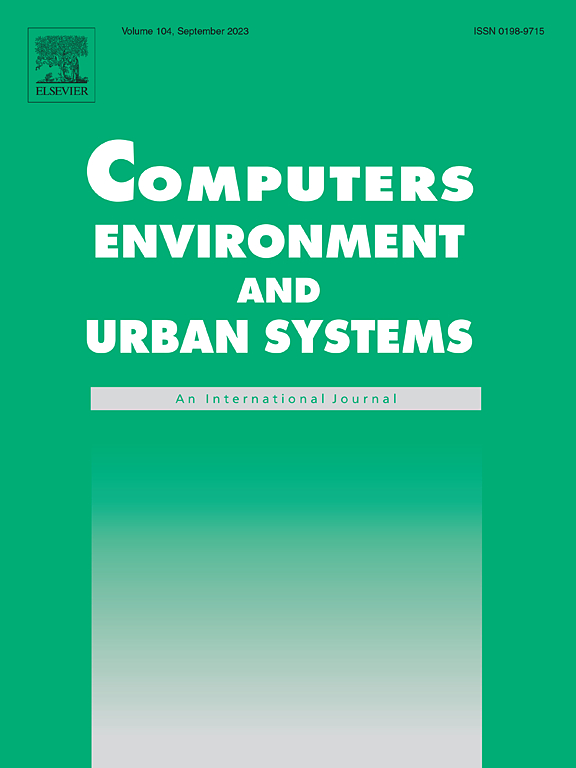从理论到深度学习:了解地理环境因素对交通违规行为的影响
IF 8.3
1区 地球科学
Q1 ENVIRONMENTAL STUDIES
Computers Environment and Urban Systems
Pub Date : 2025-02-27
DOI:10.1016/j.compenvurbsys.2025.102268
引用次数: 0
摘要
交通违法行为对道路安全构成重大威胁,往往导致事故、伤害、死亡和财产损失。虽然驾驶行为是驾驶员、车辆和环境三者动态交互作用的结果,但大多数研究主要集中在人为因素上,而忽视了地理环境中社会和环境因素的关键影响。为了解决这一差距,我们首先建立了一个理论框架,探讨车辆、驾驶员和环境因素如何相互作用,特别强调环境对驾驶行为和道路安全的影响。在此框架的基础上,我们引入了TraVio,这是一个多任务深度学习模型,它将图卷积网络(GCNs)与多层感知器(mlp)相结合,以检测和分类交通违规。通过马里兰州蒙哥马利县的一个案例研究,我们证明了TraVio在二元和多标签分类任务中都优于传统的机器学习基线。研究结果强调了地理环境和时间因素在形成交通违规行为中的关键作用。本研究不仅为预测交通违规提供了强大的建模技术,而且还提供了理论基础,可以扩展到其他与驾驶相关的主题,通过明智的城市规划和政策制定,为更安全的道路环境做出贡献。本文章由计算机程序翻译,如有差异,请以英文原文为准。
From theory to deep learning: Understanding the impact of geographic context factors on traffic violations
Traffic violations pose significant threats to road safety, often leading to accidents, injuries, fatalities, and property damage. While driving behavior results from a dynamic interaction among drivers, vehicles, and the environment, most studies have primarily focused on human factors, neglecting the critical influence of social and environmental elements of the geographical context. To address this gap, we first develop a theoretical framework that explores how vehicles, drivers, and environmental factors interact, with particular emphasis on the environmental impact on driving behavior and road safety. Building on this framework, we introduce TraVio, a multitask deep learning model that combines Graph Convolutional Networks (GCNs) with Multilayer Perceptrons (MLPs) to detect and classify traffic violations. Through a case study in Montgomery County, Maryland, we demonstrate that TraVio outperforms traditional machine learning baselines in both binary and multi-label classification tasks. The results underscore the critical role of geographic context and time factors in shaping traffic violations. This study not only provides a robust modeling technique for predicting traffic violations but also offers a theoretical foundation that can be extended to other driving-related themes, contributing to safer road environments through informed urban planning and policymaking.
求助全文
通过发布文献求助,成功后即可免费获取论文全文。
去求助
来源期刊

Computers Environment and Urban Systems
Multiple-
CiteScore
13.30
自引率
7.40%
发文量
111
审稿时长
32 days
期刊介绍:
Computers, Environment and Urban Systemsis an interdisciplinary journal publishing cutting-edge and innovative computer-based research on environmental and urban systems, that privileges the geospatial perspective. The journal welcomes original high quality scholarship of a theoretical, applied or technological nature, and provides a stimulating presentation of perspectives, research developments, overviews of important new technologies and uses of major computational, information-based, and visualization innovations. Applied and theoretical contributions demonstrate the scope of computer-based analysis fostering a better understanding of environmental and urban systems, their spatial scope and their dynamics.
 求助内容:
求助内容: 应助结果提醒方式:
应助结果提醒方式:


